FRANCE
Paris

Paris
Paris
Paris is known as the city of love and no one will deny that it is very romantic to visit the capital of France with your loved one. But Paris is so much more than "just" the city where most marriage proposals are likely to be made. It is the largest city in France with more than two million inhabitants. Paris is the largest city in Europe after London, Moscow and Istanbul. There are beautiful buildings, great shopping, fascinating museums, attractive restaurants and much, much more. Paris is the city you must visit once in your life. This city is located in the north of the country in the Île-de-France region.
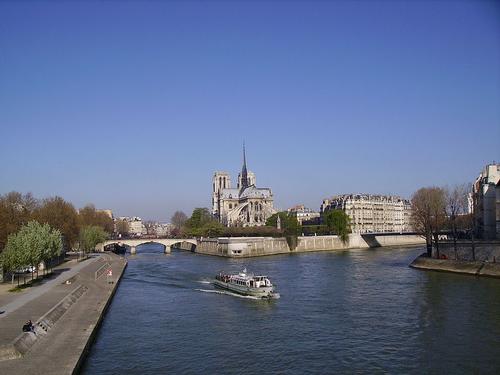 Seine Paris with Notre DamePhoto: Yair Haklai CC 3.0 Unported no changes made
Seine Paris with Notre DamePhoto: Yair Haklai CC 3.0 Unported no changes made
| advertisement |
| Hotels Paris |
Weather
Paris has a moderate maritime climate. This means reasonably cool summers and mild winters, comparable to the English climate. In Paris there are more peaks in temperatures than in the UJ and there is less rainfall on average. It is often said that Paris is on the verge of better weather. When we have a bad summer in the UK it is often just a bit drier and sunnier in Paris. In the summer months, the temperature is usually around 25 °C, which may be just a bit too warm for a city trip. It is therefore advisable to go to Paris in the spring, when the average temperature is 16 °C and there are fewer tourists than in the summer.
History
Paris's history begins at the end of the 3rd century BC as a Celtic fishing village, inhabited by the aptly named Parisii tribe. In 486 Paris becomes part of the empire of the Franks who make the city the capital of their kingdom.
Paris only really took shape during the Middle Ages. Notre Dame and the Sorbonne are built and Paris becomes the intellectual and spiritual center of Europe. The Hundred Years' War slows down the economic development of Paris. The renaissance brought another boom with many new buildings that still define the character of Paris today.
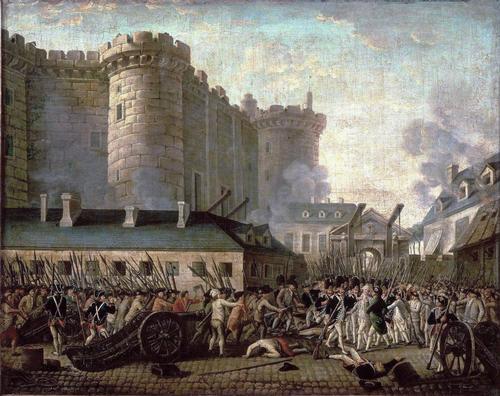 French RevolutionPhoto: Public Domain
French RevolutionPhoto: Public Domain
After the bloody French Revolution of 1789, the French monarchy was replaced by a republic. Napoleon saw the resulting chaos as an opportunity to seize power.
In the 19th century, Baron Haussmann laid the ground plan for today's Paris with its avenues and boulevards. In the early 20th century, Paris became the artistic center of the world and movements such as Cubism and Surrealism emerged.
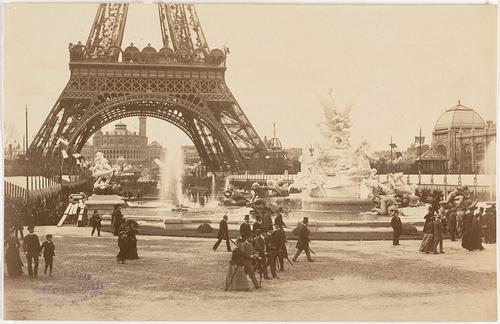 Paris Worldexhibition 1889Photo: Public domain
Paris Worldexhibition 1889Photo: Public domain
During the Second World War, Paris was occupied by the Germans. Paris was liberated by the Allies in 1944. In 1968 Paris was the center of student protests. Today, Prijs is high on the list of top European tourist destinations.
Sights
Paris is overflowing with sights. There are of course the well-known blockbusters, but there are also a number of lesser-known, yet special places to visit. Le Marais is highly recommended. Le Marais has recently become one of the hippest districts in Paris. You could assume that it is actually a shame that it is now classified in all books as the hippest district in Paris, as recently (especially in the summer months) Le Marais has been overrun by tourists. Many are afraid that this will cause the neighborhood to lose its authenticity. So get to Le Marais before it's too late. Le Marais is a unique amalgamation of a gay area and a Jewish quarter. In this neighborhood you will find nice, hip shops and delicious (often kosher) restaurants, bakeries and delicatessen shops. You can also eat the best falafel in all of France at L'as du Fallafel in Rue des Rosiers (the Jewish street of Paris).
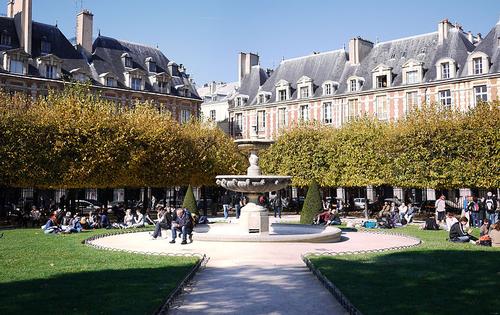 Paris Place des VosgesPhoto: Poulpy CC 3.0 Unported no changes made
Paris Place des VosgesPhoto: Poulpy CC 3.0 Unported no changes made
Afterwards, you can relax on the beautiful, tree-lined Place de Vosges, the oldest square in Paris. On this square is also the house where Victor Hugo once lived and which now houses a museum about the writer. There are also many galleries around the square where art lovers can enjoy themselves for hours.
Then some highlights of Paris, which every tourist must have seen.
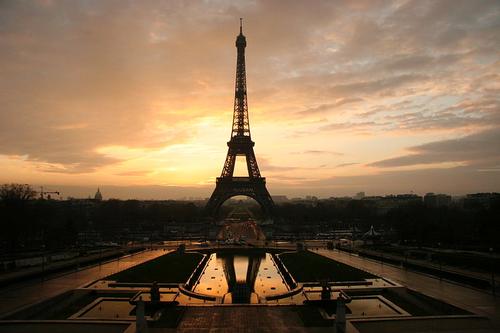 Eiffeltower ParisPhoto:Nitot CC 3.0 Unported no changes made
Eiffeltower ParisPhoto:Nitot CC 3.0 Unported no changes made
The Eiffel Tower is a breathtaking monument. The tower was built for the 1889 World's Fair to commemorate the centenary of the French Revolution. The Eiffel Tower was opened by the Prince of Wales, who would later become King Edward VII of England. The Eiffel Tower is an outstanding engineering feat designed by Gustave Eiffel. Originally hated by many Parisians, the tower has now become a famous symbol of French pride. You get spectacular views of Paris. The Eiffel Tower is 320 meters high and made entirely of wrought iron. More than six million people come to this attraction every year.
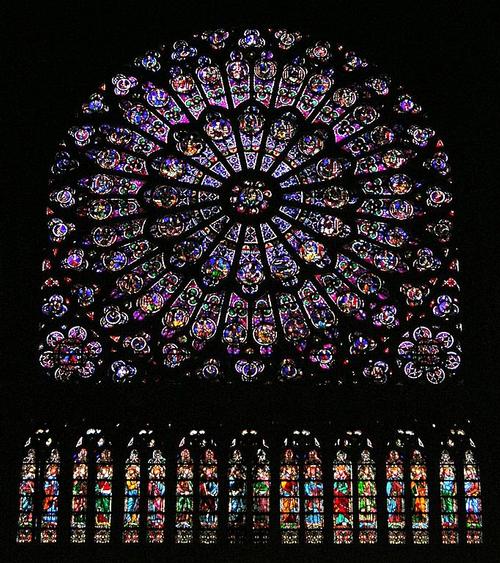 Notre Dame Rose Winow Photo: Public Domain
Notre Dame Rose Winow Photo: Public Domain
Notre Dame Cathedral is a Roman Catholic church in the 4th arrondissement, next to the River Seine. The cathedral is a fine example of European Gothic architecture. The church is famous for its huge rose window. It is an epic building with a long construction period between 1163 and 1345. The history of the cathedral and the city are closely linked. Many important events in France have taken place here over the years, such as the coronation of Henry VI of England as King of France in 1431, the marriage of Mary, Queen of Scots in 1558, the coronation of Napoleon in 1804, the canonization of Jeanne Arc in 1920. The interior of Notre Dame is cavernous and during large services, it can easily accommodate 6,000 people. There are many more interesting churches to visit such as Saint Chapelle. the Pantheon and the Sacre Coeur, to name but three.
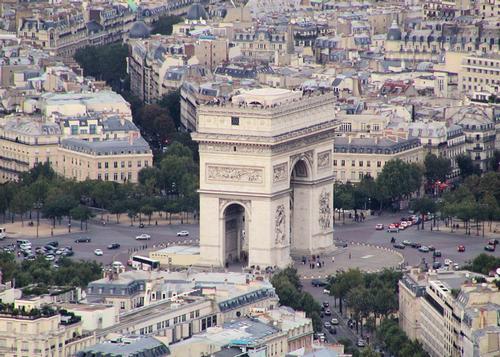 Arce de Triomphe ParisPhoto: Dontworry CC 3.0 Unported no changes made
Arce de Triomphe ParisPhoto: Dontworry CC 3.0 Unported no changes made
The Arc de Triomphe is the crowning glory of the Champs Elysées, but few realize how large and impressive this historic monument really is. The Arc was inaugurated in 1836 after three decades of construction work. The arch measures approximately 50 meters in height and 45 meters in width. To mark the end of World War I, renowned aviator Charles Godefroy flew his biplane through the gate in 1919 as part of the celebrations. It is possible to climb the arch via a steep staircase that leads to a small museum.
There are hundreds of museums in Paris that sometimes have long lines waiting for visitors. Some of the most famous museums are:
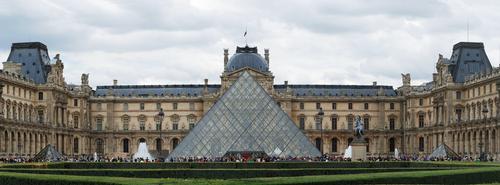 Louvre ParisPhoto: Alvesgaspar CC 3.0 Unported no changes made
Louvre ParisPhoto: Alvesgaspar CC 3.0 Unported no changes made
Obviously the Louvre, which first opened as a public museum in 1793. With more than 300,000 works of art, antiquities and statues, the Musée du Louvre is the largest art museum in the world. Among the most famous works on display here are the Venus de Milo and Leonardo da Vinci's 'Mona Lisa'. The entrance to this museum is via a 21-meter-high glass pyramid, which was added in the 1980s at the behest of former French president François Mitterrand. The pyramid was controversial at the time, but is now widely accepted. A warning is in order at the Louvre, tens of thousands of tourists come every day just to have been there because it is part of a visit to Paris. They are often barbarians who, brandishing their cameras, only get in the way and significantly obscure the collection.
The musee des arts decoratifs is also located in the Louvre building and is an oasis of calm compared to the Louvre itself. The museum has a collection of furniture, textiles, wallpaper, porcelain, toys and jewelry from the Middle Ages to the present day. You will see, among other things, the art nouveau pavilion of the World Fair of 1900 and the art deco bedroom with bathroom by couturier Jeanne Lanvin from 1920.
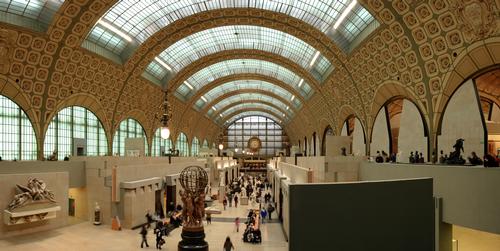 Musée d'Orsay ParisPhoto: Benh CC 3.0 Unported no changes made
Musée d'Orsay ParisPhoto: Benh CC 3.0 Unported no changes made
The Musée d'Orsay is located in a former station and it is one of the most popular museums in the city. The museum mainly covers the period between 1848 and 1914. Both Impressionist and Post-Impressionist artists are well represented in the Musée d'Orsay. The museum is often visited in conjunction with the Orangerie, which houses the canvases of Monet's water lilies, as well as a number of masterpieces by Pissarro, Renoir, Gauguin and Sisley.
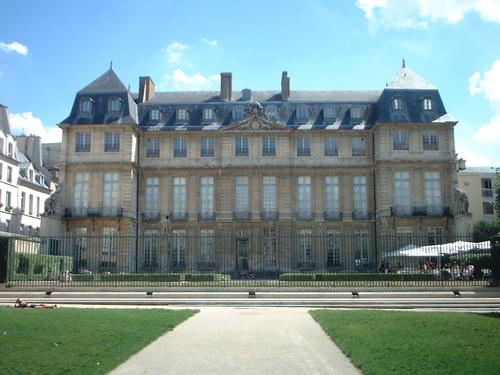 Picasso Museum ParisPhoto: Pol in the public domain
Picasso Museum ParisPhoto: Pol in the public domain
The Picasso Museum houses the largest collection in the world of works by Pablo Picasso. It has recently reopened and is housed in a 17th century hotel that has been luxuriously restored by the French government. In addition to the works of Picasso, there are also works by Cézanne, Miró, Renoir, Braque, Degas and Matisse to admire.
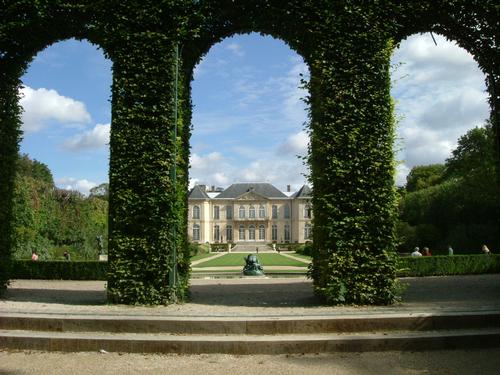 Roidin Museum ParisPhoto: Geolina163 CC 3.0 Unported no changes made
Roidin Museum ParisPhoto: Geolina163 CC 3.0 Unported no changes made
The Rodin Museum is opened to the general public in 1919. This former 18th century hotel (the previous name was Hotel Biron) is where Auguste Rodin once lived and many of his works are housed here. The museum and the large garden can be visited separately. The beautifully landscaped garden has more than 2,000 rose bushes.
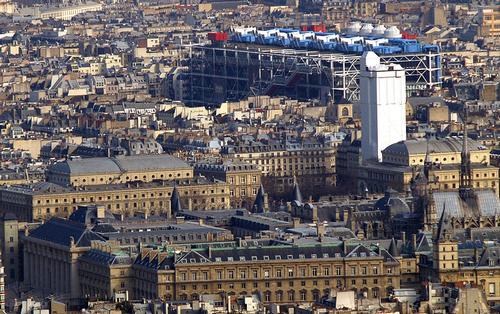 Centre Pompidou ParisPhoto: Rui Ornelas CC 2.0 Generic no changes made
Centre Pompidou ParisPhoto: Rui Ornelas CC 2.0 Generic no changes made
The Center national d’art et culture Pompidou was designed by architects Richard Rogers and Renzo Piano and was initiated by President Georges Pompidou. The museum has the largest collection of modern art in Europe. All art movements of the 20th century are represented there: expressionism, cubism, constructivism, surrealism, pop art, op art and kinetic art, arte povera and hyperrealism. In addition to visual art, there is also room for music, film, theater and books. The building itself is also worth a visit and is known for the use of steel, glass and colored pipes. The view over Paris from the sixth floor is spectacular.
The Musee du Quai Branly is beautifully situated on the Seine. The building was designed by the architect Jean Nouvel on the initiative of President Jack Chirac. French presidents apparently have a thing for museums! The museum contains non-Western objects and art from Africa, Asia, Oceania and America. The collection includes more than 300,000 objects. The facade is painted by artists of Aboriginal origin and there is also a special garden with vegetation from all over the world.
Tips
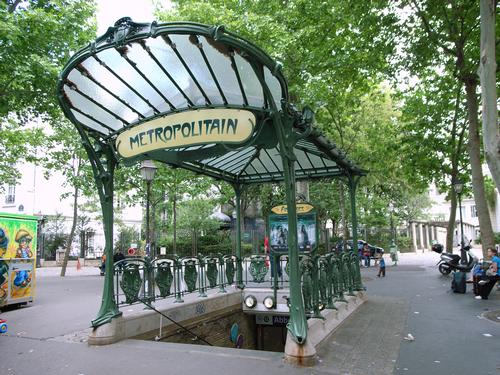 Paris MetroPhoto: Steve Cadman CC 2.0 Generic no changes made
Paris MetroPhoto: Steve Cadman CC 2.0 Generic no changes made
The fastest way to get around Paris is without a doubt the metro. The metro is not expensive; for a few euros you already have a day ticket. There is also the option to buy a metro "discovery ticket" for one or more days and different zones. The only downside to the metro is that you don't see much of the city when you travel underground.
A transport option where you see more of the city is: "Paris L'Open Tour". You will then drive an open double-decker bus through Paris and can get on and off whenever you want. It is very touristy, but it is a smart and fast way to see a lot of Paris in a short time.
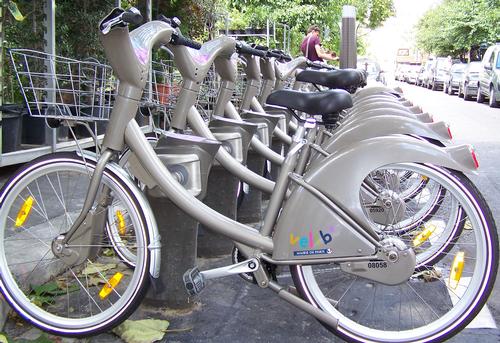 Paris Public BikesPhoto: Rcsmi CC 3.0 Unported no changes made
Paris Public BikesPhoto: Rcsmi CC 3.0 Unported no changes made
An original and healthy way to discover Paris is "le Vélbi" this word comes from vélo libre, which means free or public bicycle. Bicycle racks can be found at various places in Paris where you can rent such a public bicycle. There is a payment terminal at the bicycle shed and a bicycle will be released as soon as you have paid here. This collective bicycle plan is very cheap; the bicycle is free for the first half hour, after which you pay an amount per half hour. After use, you can return the bike at all Vélib bike sheds.
Useful links Paris
BBC Country ProfilesWorld Fact Book Explore all Countries
How to call
Last updated June 2025
Copyright: Team - The World of Info